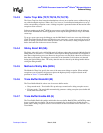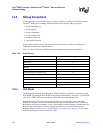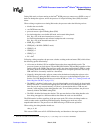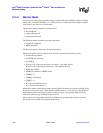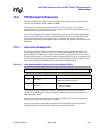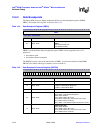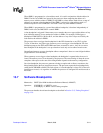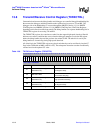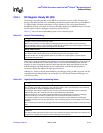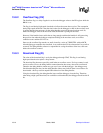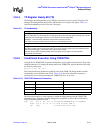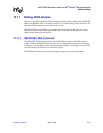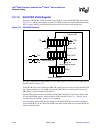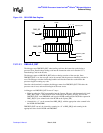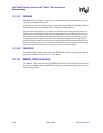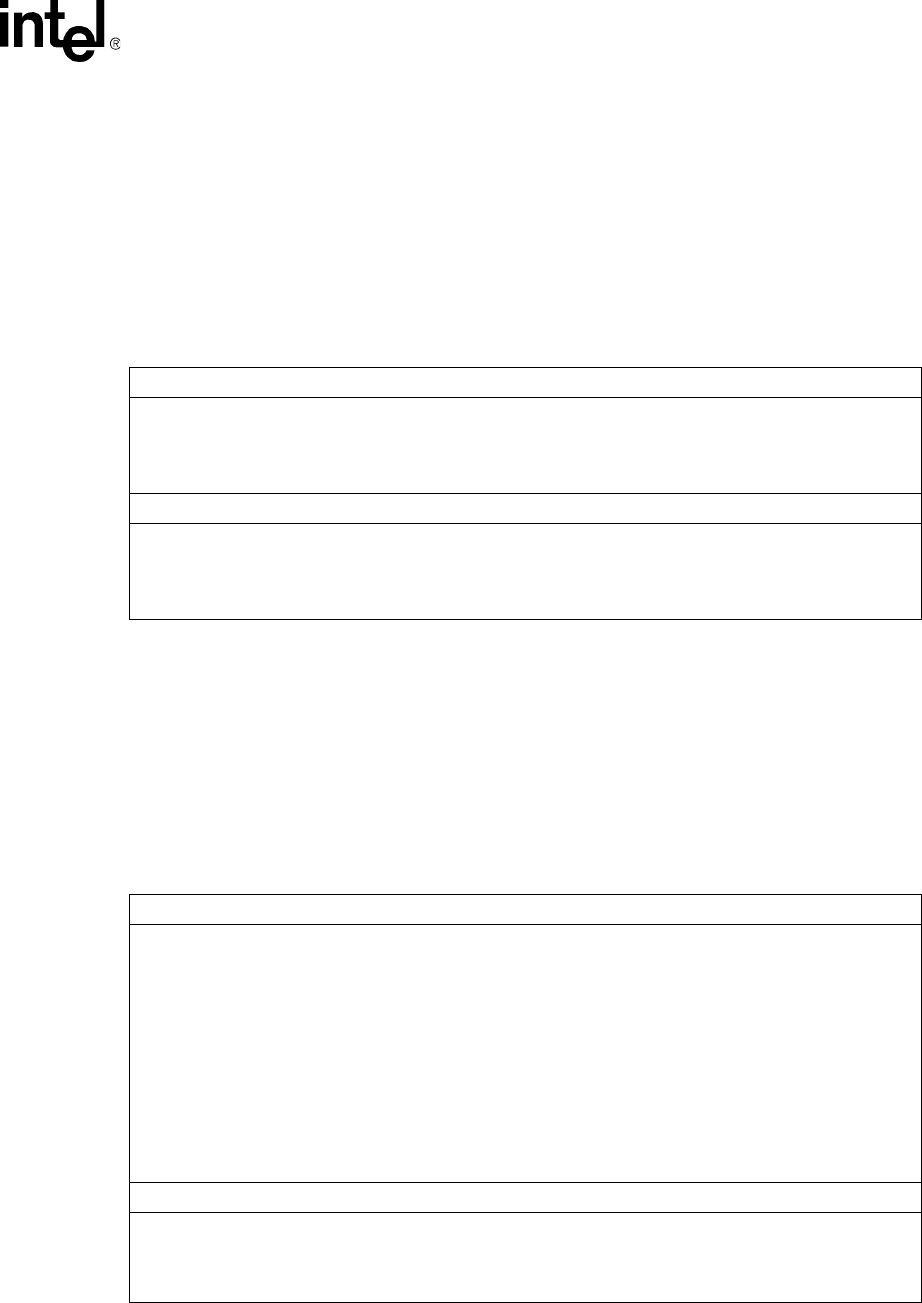
Developer’s Manual March, 2003 13-13
Intel
®
80200 Processor based on Intel
®
XScale
™
Microarchitecture
Software Debug
13.8.1 RX Register Ready Bit (RR)
The debugger and debug handler use the RR bit to synchronize accesses to RX. Normally, the
debugger and debug handler use a handshaking scheme that requires both sides to poll the RR bit.
To support higher download performance for large amounts of data, a high-speed download
handshaking scheme can be used in which only the debug handler polls the RR bit before accessing
the RX register, while the debugger continuously downloads data.
Table 13-7 shows the normal handshaking used to access the RX register.
When data is being downloaded by the debugger, part of the normal handshaking can be bypassed
to allow the download rate to be increased. Table 13-8 shows the handshaking used when the
debugger is doing a high-speed download. Note that before the high-speed download can start,
both the debugger and debug handler must be synchronized, such that the debug handler is
executing a routine that supports the high-speed download.
Although it is similar to the normal handshaking, the debugger polling of RR is bypassed with the
assumption that the debug handler can read the previous data from RX before the debugger can
scan in the new data.
Table 13-7. Normal RX Handshaking
Debugger Actions
Debugger wants to send data to debug handler.
Before writing new data to the RX register, the debugger polls RR through JTAG until the bit is cleared.
After the debugger reads a ‘0’ from the RR bit, it scans data into JTAG to write to the RX register and sets the
valid bit. The write to the RX register automatically sets the RR bit.
Debug Handler Actions
Debug handler is expecting data from the debugger.
The debug handler polls the RR bit until it is set, indicating data in the RX register is valid.
Once the RR bit is set, the debug handler reads the new data from the RX register. The read operation
automatically clears the RR bit.
Table 13-8. High-Speed Download Handshaking States
Debugger Actions
Debugger wants to transfer code into the Intel
®
80200 processor system memory.
Prior to starting download, the debugger must polls RR bit until it is clear. Once the RR bit is clear, indicating
the debug handler is ready, the debugger starts the download.
The debugger scans data into JTAG to write to the RX register with the download bit and the valid bit set.
Following the write to RX, the RR bit and D bit are automatically set in TXRXCTRL.
Without polling of RR to see whether the debug handler has read the data just scanned in, the debugger
continues scanning in new data into JTAG for RX, with the download bit and the valid bit set.
An overflow condition occurs if the debug handler does not read the previous data before the debugger
completes scanning in the new data, (see Section 13.8.2, Overflow Flag (OV) for more details on the overflow
condition).
After completing the download, the debugger clears the D bit allowing the debug handler to exit the download
loop.
Debug Handler Actions
Debug is handler in a routine waiting to write data out to memory. The routine loops based on the D bit in
TXRXCTRL.
The debug handler polls the RR bit until it is set. It then reads the Rx register, and writes it out to memory. The
handler loops, repeating these operations until the debugger clears the D bit.



